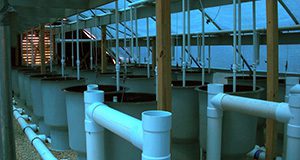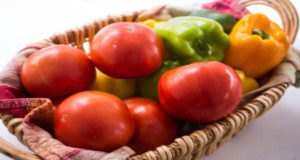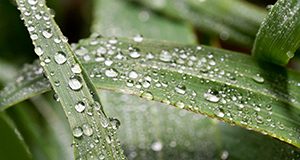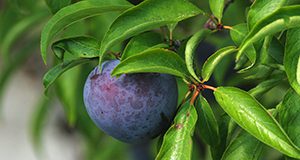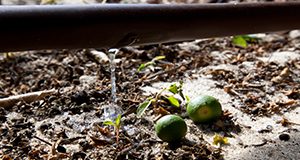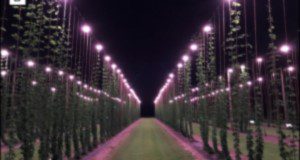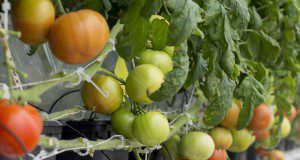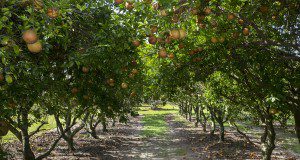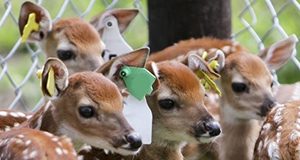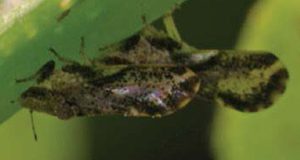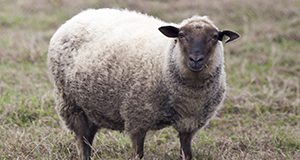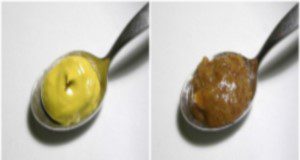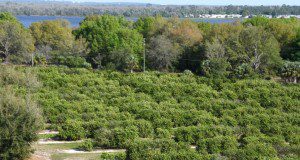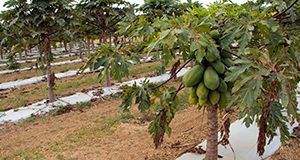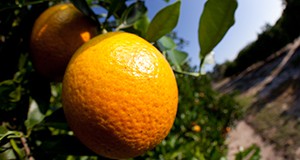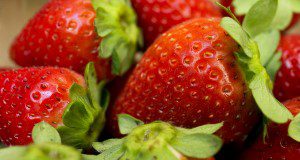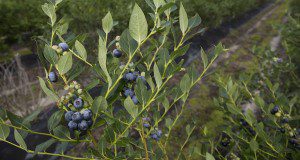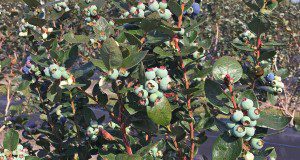Aquaculture is growing in Florida as it is worldwide, but in Florida aquaculture has not yet reached its substantial potential. To understand why this might be, the University of Florida's Institute of Sustainable Food Systems organized and convened a meeting between small-agency, industry, and academic stakeholders to discuss the opportunities and obstacles to aquaculture in Florida. This 6-page fact sheet written by Edward Camp, Taryn Garlock, and James Anderson and published by the UF/IFAS School of Forest Resources and Conservation, Program in Fisheries and Aquatic Sciences, describes the proceedings of this meeting in the context of the broader scientific literature explaining why aquaculture ventures do and sometimes do not succeed.
https://edis.ifas.ufl.edu/fa221
Category: Agriculture
Antibiotics in Crop Production
This new 5-page article presents an overview of the use of antibiotics in agriculture. Several of the most severe bacterial diseases of tree fruit and other crops are discussed and their integrated management, which includes the use of antibiotics, is described. Antibiotic use for plant disease protection is compared with the use of antibiotics in livestock production, and their future and limitations in plant production are discussed. Written by Leigh Archer, Ute Albrecht, and Pamela Roberts, and published by the UF/IFAS Horticultural Sciences Department.
https://edis.ifas.ufl.edu/hs1366
How to Avoid Common Problems with Leaf Wetness Sensor Installation and Maintenance
Leaf wetness duration is an essential input in disease prediction models and decision support systems in Florida and elsewhere. Incorrect installation or lack of regular maintenance of leaf wetness sensors may lead to errors in plant disease risk monitoring and negative impacts on yield. This 7-page publication provides detailed guidelines for the proper installation and maintenance of leaf wetness sensors and describes the most common problems found in field installations as well as potential solutions. Written by T. B. Onofre, C. W. Fraisse, N. A. Peres, and J. McNair, and published by the UF/IFAS Department of Agricultural and Biological Engineering, February 2020.
https://edis.ifas.ufl.edu/ae538
Cultivo de ciruelas en Florida
Las ciruelas podrían ser un cultivo potencial para los productores y propietarios de viviendas en Florida y otras áreas de invierno templado en toda la costa del Golfo, pero muchas variedades de ciruelas de la costa oeste no funcionarán de manera consistente en Florida para producir fruta. Sin embargo, el programa de mejoramiento de fruta de hueso de la Universidad de Florida ha desarrollado cultivares que mejoran el potencial para el cultivo de ciruelas en Florida y otras áreas de invierno templado que tienen alta presión de enfermedades. Estos cultivares se recomiendan para probar en Florida. Los nombres de todos los cultivares de ciruela de la Universidad de Florida comienzan con el prefijo 'Gulf'. Estos cultivares son ciruelas de tipo japonés (Prunus salicina Lindl.) y tienen resistencia al escaldado de hojas de ciruela (Xylella fastidiosa) y a la bacteriosis o cribado (Xanthomonas campestris). El tamaño del fruto es satisfactorio (aproximadamente 1½ a 2 pulgadas de diámetro) con buena calidad del fruto. Maduran a principios o finales de mayo, aproximadamente dos semanas antes de que las ciruelas de otras áreas lleguen al Mercado.
This new 14-page fact sheet is the Spanish translation of HS895/HS250, Growing Plums in Florida, written by A. Sarkhosh, M. Olmstead, E. P. Miller, P. C. Andersen, and J. G. Williamson, translated by Tatiana Sanchez, and published by the UF/IFAS Horticultural Sciences Department.
https://edis.ifas.ufl.edu/hs1364
Basic Tips for Designing Efficient Irrigation Systems
As freshwater resources become increasingly scarce and droughts become more frequent, there is a need for efficient use of water resources. Designing efficient irrigation systems and equipment will not only save money but also conserve water. This 10-page fact sheet discusses factors to consider when designing irrigation systems. Written by Haimanote K. Bayabil, Kati W. Migliaccio, Michael Dukes, and Laura Vasquez, and published by the UF/IFAS Department of Agricultural and Biological Engineering, February 2020.
https://edis.ifas.ufl.edu/ae539
Using Supplemental Lighting to Control Flowering of Hops in Florida
Hops (Humulus lupulus L.) are an emerging crop in Florida. Florida’s craft beer industry has experienced significant growth over the last 10 years, with 285 breweries producing 42.6 million gallons of beer and generating an economic impact of $3.6 billion in 2018. To respond to their strong demand for locally grown hops, an interdisciplinary hops research team is currently studying optimum crop management practices at the UF/IFAS Gulf Coast Research and Education Center (UF/IFAS GCREC). In Florida, the major yield-limiting factor is premature flowering induced by inadequate day length. This new 4-page article, written by Shinsuke Agehara and published by the UF/IFAS Horticultural Sciences Department, provides guidelines for supplemental lighting to control flowering of hops in Florida.
https://edis.ifas.ufl.edu/hs1365
Indoor Vertical Farming Systems for Food Security and Resource Sustainability
Indoor vertical farming has been gaining increased popularity worldwide as a method of addressing food security while satisfying sustainability needs. This 5-page fact sheet written by Jiangxiao Qiu, Haimanote K. Bayabil, and Yuncong Li and published by the UF/IFAS School of Forest Resources and Conservation provides a comprehensive summary of the current status of indoor vertical farming in the United States and globally, commercial derivatives, major sustainability benefits and limitations and challenges. Learn about the limitations and challenges of the industry as well as the potential benefits both for food security and resource sustainability.
https://edis.ifas.ufl.edu/fr429
Nutrition of Florida Citrus Trees, Third Edition
This update to 2007’s second edition adds information regarding nutrition of Florida citrus trees affected by huanglongbing (HLB), also known as citrus greening. Much of the guidance provided in this document on nutrients, application methods, leaf and soil sampling, and irrigation scheduling is also effective for trees affected by HLB. However, research conducted since the previous edition was published has established changes in many production practices, including nutrient rates, irrigation scheduling, soil pH management, and use of Citrus Under Protective Screen (CUPS). Changes to the second edition will appear at the beginning of chapters 2, 6, 8, 9, and 11. See also this topic page for links to individual chapters in HTML and PDF formats. This 115-page book was edited by Kelly T. Morgan and Davie M. Kadyampakeni, and published by the UF/IFAS Department of Soil and Water Sciences.
https://edis.ifas.ufl.edu/ss478
Diarrhea in Farmed White-tailed Deer Fawns
Diarrheal diseases, commonly called scour, are common in newborn ruminant farm animals including deer fawns. The clinical presentation can range from mild diarrhea without systemic disease to profuse, acute diarrhea associated with rapid dehydration and death, sometimes within hours of onset. Determining the particular agents associated with an outbreak of diarrhea is important for both prevention and treatment. This 5-page fact sheet written by Juan M. Campos Krauer and Samantha M. Wisely and published by the UF/IFAS Department of Wildlife Ecology and Conservation focuses on disease in fawns caused by pathogenic types of Escherichia coli, describes the pathogens and how they infect fawns, and includes advice about treatment and prevention.
https://edis.ifas.ufl.edu/uw463
Citrus Pest Quick Guide: Asian Citrus Psyllid (Diaphorina citri Kuwayama)
A one-page quick guide written by and published by the Entomology and Nematology Department presents the life cycle of the Asian citrus psyllid and provides several photos of the pest and the damage it causes to assist in identification.
https://edis.ifas.ufl.edu/in1271
Citrus Pest Quick Guide: Citrus Leafminer (Phyllocnistis citrella Stainton)
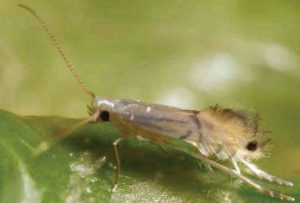
A one-page quick guide written by Lauren M. Diepenbrock and Jamie D. Burrow and published by the Entomology and Nematology Department presents the life cycle of the citrus leafminer and provides several photos of the pest and the damage it causes to assist in identification.
https://edis.ifas.ufl.edu/in1254
Sheep Bot Fly Oestrus ovis Linnaeus (1761) (Insecta: Diptera: Oestridae)
The sheep bot fly, Oestrus ovis, is an obligate parasite found all over the world. It cannot complete its life cycle without parasitizing the nasal passages, frontal and maxillary cavities, and sinuses of sheep. Unlike other flies, females do not lay eggs, instead depositing droplets containing live larvae into the nostrils of sheep. This 4-page fact sheet written by Hannah A. Sholar and Jennifer L. Gillett-Kaufman and published by the UF/IFAS Entomology and Nematology Department describes the life cycle of the pest and its veterinary significance and management.
https://edis.ifas.ufl.edu/in1267
Small-to-Medium-Scale Sensory Evaluation of Horticultural Crops: Sensory Attributes
Given the economic impact associated with the value and acceptability of horticultural crops, sensory evaluation is commonly employed in research, product development, and quality control, with very specific parameters outlined for its proper execution. The resulting data can be used to make sound decisions about crop quality and marketability, ultimately determining the overall value. This new 3-page publication of the UF/IFAS Environmental Horticulture Department is the first in a series designed to assist producers in the small-to-medium-scale sensory evaluation of their horticultural crops, outlining sensory attributes essential to sensory evaluation, including appearance, aroma, texture, and flavor. Written by Sean Michael Campbell and Charles A. Sims.
https://edis.ifas.ufl.edu/ep579
Cost of Producing Fresh Market Grapefruit in Indian River in 2018/19
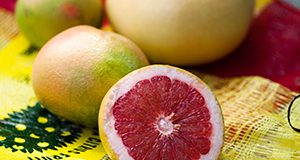
This 4-page fact sheet written by Ariel Singerman and published by the UF/IFAS Food and Resource Economics Department presents the cost of production per acre for growing fresh grapefruit in the Indian River region during 2018/19. Estimates reflect costs and cultural practices for a panel of growers, particularly important information at this time because, since citrus greening (HLB) was found, growers have been modifying their practices from year to year in an attempt to cope with the disease.
https://edis.ifas.ufl.edu/fe1078
Quantum GIS (QGIS): An Introduction to a Free Alternative to More Costly GIS Platforms
Geographic information system (GIS) software packages can be prohibitively expensive, causing many to shy away from mapping and spatial analysis. This 7-page fact sheet written by Jeffry M. Flenniken, Steven Stuglik, and Basil V. Iannone III and published by the UF/IFAS School of Forest Resources and Conservation introduces the reader to a free GIS software package called Quantum GIS (QGIS), walking the reader through simple GIS processes that can be used to visualize spatial patterns of importance to a variety of fields, including natural resources, agriculture, and urban planning. Learn how to create a land-cover map for a county of interest and create heatmaps that illustrate the density of a given attribute (Florida Springs for this example). This publication will benefit those interested in incorporating GIS into their work but who are unable to afford expensive proprietary GIS software packages, as well as anyone interested in learning a new GIS software package.
https://edis.ifas.ufl.edu/fr428
ET-Based Irrigation Scheduling for Papaya (Carica papaya) in Florida
Three irrigation scheduling methods (set schedule, ET-based, and tensiometer-based) were tested for papaya production in south Florida. ET-based irrigation scheduling was found to conserve water effectively. This 6-page document primarily focuses on the ET-based irrigation scheduling techniques for papaya under Florida conditions. Written by Haimanote K. Bayabil, Jonathan H. Crane, Kati W. Migliaccio, Yuncong Li, and Fredy Ballen, and published by the UF/IFAS Department of Agricultural and Biological Engineering, March 2020.
https://edis.ifas.ufl.edu/ae540
Cost of Producing Processed Oranges in Southwest Florida in 2018/19
This 4-page fact sheet written by Ariel Singerman and published by the UF/IFAS Food and Resource Economics Department estimates the cost of production per acre for processed oranges grown in southwest Florida in 2018/19 based on a survey of southwest Florida growers.
https://edis.ifas.ufl.edu/fe1077
Common Strawberry Diseases in Florida
This new two-page publication of the UF/IFAS Plant Pathology Department describes symptoms of most common strawberry diseases in Florida and summarizes the efficacy of fungicides labeled for management of such diseases. Written by Michelle S. Oliveira and Natalia A. Peres.
https://edis.ifas.ufl.edu/pp354
Calendar for Southern Highbush Blueberry Management in Florida
Southern highbush blueberries (SHB) are commercially grown throughout Florida in both deciduous and evergreen systems. This calendar addresses general management requirements on a monthly basis for conventional (nonorganic) systems and should be used in coordination with other UF/IFAS EDIS publications. This new 7-page article, published by the UF/IFAS Horticultural Sciences Department, was written by Douglas A. Phillips, Jeffrey G. Williamson, Philip F. Harmon, Oscar E. Liburd, and Peter J. Dittmar.
https://edis.ifas.ufl.edu/hs1363
Evergreen Production System for Southern Highbush Blueberries in Florida
In central and south-central Florida, many southern highbush blueberries (SHB) are grown in an evergreen system, in which the plants do not go dormant, and are managed to retain their leaves from the previous year through harvest the following spring to support early flowering and fruit set. The evergreen system has also been used under tunnels in north-central Florida. This new 3-page publication of the UF/IFAS Horticultural Sciences Department, written by Douglas A. Phillips, Jeffrey G. Williamson, and Patricio R. Munoz, provides an overview of the evergreen production system for SHB in Florida.
https://edis.ifas.ufl.edu/hs1362
